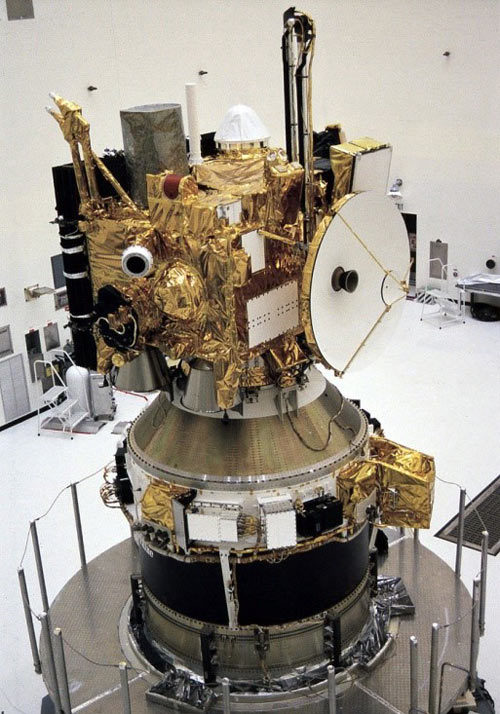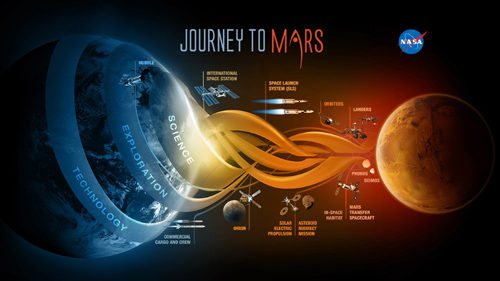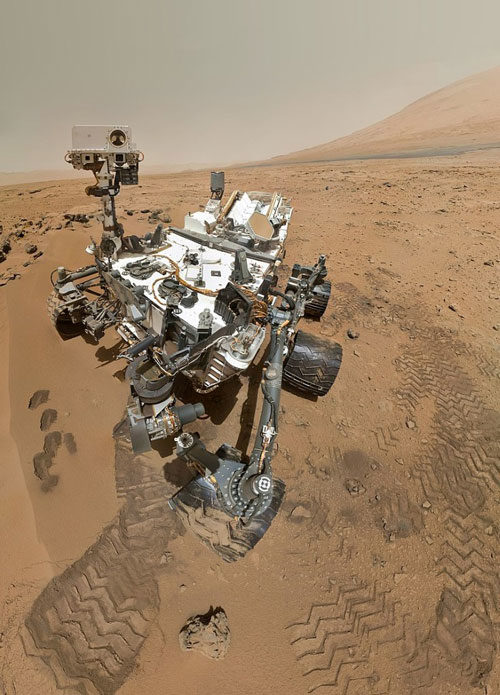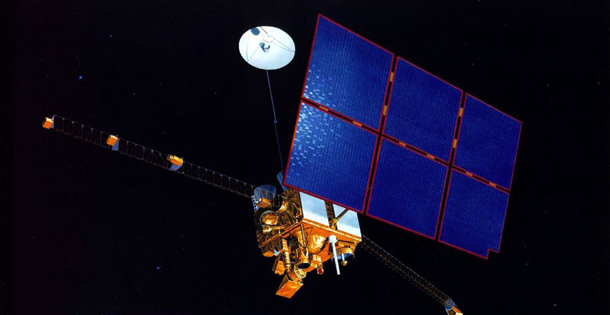The beginning of the tale sounds like the trailer for a movie: NASA launched Mars Observer to study the red planet . . . but something went wrong.
Twenty-five years ago today, NASA lost communication with the Mars Observer probe three days before it was scheduled to enter Mars’s orbit. We look back at what the probe was supposed to accomplish, and the dramatic, and ultimately triumphant, changes that NASA made to their Mars exploration plan in its wake.
Mars Observer left Earth on September 25, 1992, from Space Launch Complex 40 at Cape Canaveral, Florida. Ahead of launch, the probe had been cleaned due to particle contamination; it’s suspected that the particles actually resulted from measures taken to protect the probe when Hurricane Andrew made landfall in Florida in August of 1992. Aside from the cleaning, nothing unusual had occurred with the probe, and the launch was successful. The trip from Earth to Mars orbit should have taken roughly 11 months, with an expected insertion in orbit on August 24, 1993.

The mission profile for the probe was ambitious. It would take several weeks to achieve the desired orbital positioning, and then the probe would collect data for one Martian year (687 days, the time it takes Mars to orbit the sun once). As part of this mission, in November of 1993, Mars Observer was to have begun scanning for a global map. Various instruments were to collect over 75 gigabytes of data, far more than previous missions. At an undetermined point, Mars Observer would cease to operate when it ran out of propellant and/or lost battery life.

None of that came to pass. On August 21, 1993, NASA lost contact with Mars Observer; NASA would later call this signal loss “inexplicable.” At that moment, they had no idea what had happened to the probe. NASA tried to contact the probe every 20 minutes for hours, but could not raise it. Robert J. Macmillan, a spokesperson for the Jet Propulsion Laboratory, told the New York Times that “”If we don’t re-establish a communications downlink, we’ll probably never know if it went into orbit or not.” They never did re-establish communications. It is unknown if the probe eventually settled into the planned Mars orbit or if it drifted into another pattern or orbit. Observer, for all intents and purposes, simply disappeared.
The Naval Research Laboratory investigation suggested that a fuel pressurization tank rupture was the likely culprit. This could have caused an improperly early mix of fuel and oxidizer that sent the probe into a “catastrophic spin,” which could have in turn damaged the electrical systems. Nevertheless, the report states that “the board was unable to find conclusive evidence pointing to a particular event that caused the loss of the Observer.”
NASA did not simply accept the loss of Observer. By September of 1993, NASA formed the Mars Exploration Program to vigorously pursue missions to the red planet. The MEP has four “broad goals” as defined by NASA, which are: determine if life ever arose on Mars; characterize the climate of Mars; characterize the geology of Mars; and prepare for the human exploration of Mars.

A direct result of this rededication would come in 2011 when the Curiosity rover landed on Mars. The successful landing was celebrated as a triumph by NASA. Not only has it provided an enormous amount of scientific information and data, including discovering that Mars once had conditions favorable to microbial life, it’s proven extremely durable. Originally planned to be a two-year operation, Curiosity’s mission was extended indefinitely. The tough little rover still roams Mars; as of today, it’s been on Mars for 2,205 days, running reports and collecting samples at sites like the Gale Crater.

Despite the subsequent success of Curiosity, NASA still has one Mars hurdle it can’t always overcome: bureaucracy. NASA experienced deep budget cuts in 2013,which resulted in reformulation of some of the Mars mission directives. More recently, Congress went against cuts suggested in President Donald J. Trump’s budget, approving instead $20.7 billion for the agency, its biggest budget since 1996. Presently, MEP is pursuing a soil sample and return mission in conjunction with the European Space Agency, which should take several years to complete. NASA’s Associate Administrator for the Science Mission Directorate, Thomas Zurbuchen, said, “Mars is telling us to stay the course and keep searching for evidence of life.”
Become a Saturday Evening Post member and enjoy unlimited access. Subscribe now




Comments
What an interesting feature on the disappearance of the Mars Observer 25 years ago, and how it ties in with the success of Curiosity over the past 8 years.
This also shows that Congress (in a VERY rare move) did something right to keep the momentum moving. I know I’m curious to see what unfolds in outer space concerning Mars. Still, it’s weird wondering just where that 5,000 pound spacecraft is.